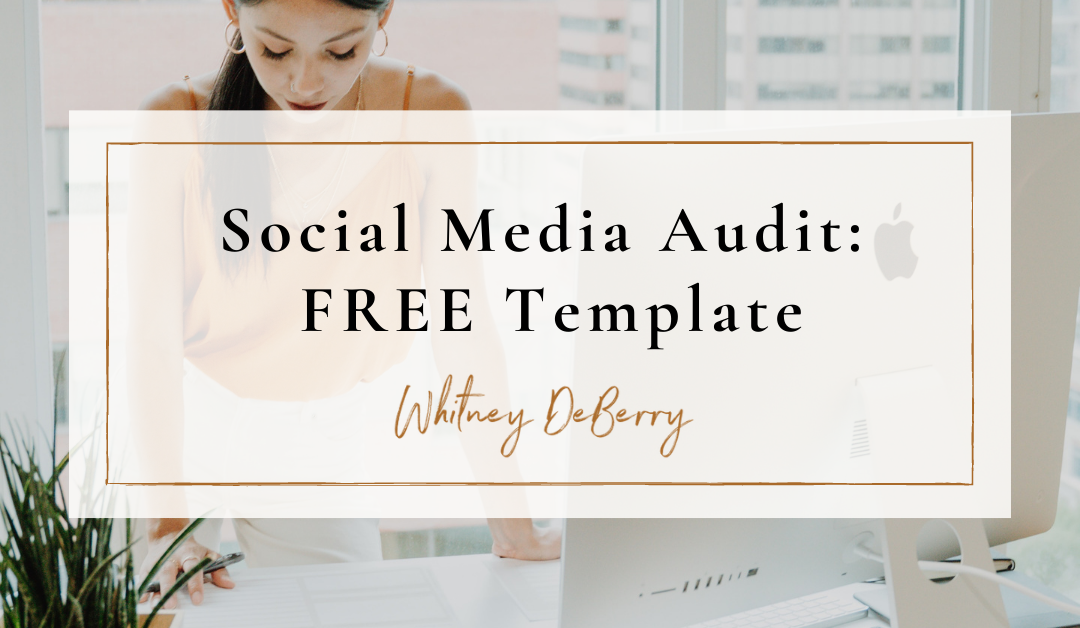Whether you’re trying to add value with a current client or looking to give your brand’s social media a refresh – a social media audit is an excellent place to start.
In this post, I will be sharing with you my 3-step guide to completing a social media audit.
Follow along by downloading this free social media audit template!
What is a social media audit?
A social media audit includes reviewing all of your social media platforms to assess areas that can be optimized based on new digital trends or changes in your brand. If you do not have a social media strategy, you should be auditing your social media presence every 3-6 months. Digital is ever-changing, so it’s essential that you’re looking at your presence with a critical eye to ensure that the time and energy you’re putting into content production is adequate!
How to Conduct a Social Media Audit
A social media audit may sound intimidating but really it’s just taking note of key components that can be optimized and understanding where you’re sitting from a data perspective. This will help you track growth in relation to your goals. Not sure where to begin? I’ve broken it down for you into three simple steps:
Step 1: What platforms are you using?
Make a list of what platforms you’re using and why. It is essential that you understand these platforms’ priorities and how they play a part in your digital marketing strategy. Remember, you do not need to be posting daily on every single platform. Most likely, your target audience isn’t checking every single platform daily!
If you’re following along in my social media audit template, you will define each platform’s priority under the “priority” column. I like to break these up into Primary, Secondary, and Tertiary.
- Primary: Your primary platforms are where you’re posting 5-7 times per week and where you’re focusing the majority of your time! Your target audience lives here!
- Secondary: You may be posting here 1-3 times per week, and these are platforms that you see some significance in but are not high lead generators.
- Tertiary: To appear active on social media, you post only important business updates to these platforms.
Once you have identified the platforms you’re using, you will need to remember why you’re using them. What is your goal for the platform? You may be using Instagram specifically to drive leads to a course and using Twitter specifically for brand awareness. Understanding the positions different platforms play is important!
Step 2: Analyze the numbers
This may seem intimidating, especially if you don’t typically look at your digital data. However, data is everything and will tell the story of how your brand is growing! It’s important to know what these numbers mean! If you’re new to this, I have included five significant metrics for you to look at. If you’re not a newbie here, go crazy! Feel free to add in your own columns and metrics you find important.
- Followers: Don’t get caught up on this. Remember, it’s about the quality of your follower vs. the quantity. You can have 10k followers but if they don’t engage with your content, why does it matter?
- Top piece of content: Take note of your most engaging piece of content. What had the most likes/comments/shares etc? Why? What made it a compelling piece? Take note and plan to make more like it!
- Conversions: Take a look at Google Analytics and see what is driving conversions. UTM parameters can be helpful here!
- Engagement rate: Many people care about things like reach and impressions, but I care about engagement. What was so compelling that it made the user engage with it?
Step 3: What needs to be optimized?
Wrap up the audit by taking a look to make sure your platforms are up-to-date! When was the last time you checked to make sure your call to action went to an actual website? It’s not showing an error is it? What about your logo and graphics? Are those representative of any rebrands? Doing a simple scan of your presence will help you identify what needs to be updated and what’s already working!
See? That was simple, wasn’t it, and now you have something to reflect on the period over period. If you’re looking for something a little more structured, you can check out my free social media strategy template!


Very helpful guide
Thank you William!